What's the difference between washed coffee beans and sun-dried coffee beans? How to make a difference when coffee beans are ground into powder?
Professional coffee knowledge exchange more coffee bean information please follow the coffee workshop (Wechat official account cafe_style)
I believe that friends who like to drink individual coffee have heard of washing treatment and sun treatment. After picking the coffee fruit, the innermost coffee beans will be taken out through a series of steps, which we call coffee bean treatment. Even the coffee beans from the same batch of coffee fruits from the same producing area and the same land have different flavor performance by different treatment methods. Qianjie believes that the flavor of water-washed coffee beans will be brighter sour and give people a fresh and clean flavor, while sun-treated coffee beans will have a sense of fermentation and give people a sense of juice-like smoothness as a whole. Next, let's talk about the difference between water washing and sun treatment of coffee beans in the front street.
Washing treatment method
As the name implies, washing treatment uses a large amount of water to deal with coffee fruit. Some coffee producing areas cannot use this method to treat coffee beans because of the lack of water in the geographical environment. There are also some poor areas because the use of a large amount of clean water results in higher costs. Many poor areas cannot use water washing to deal with coffee beans, so water washing treatment is often used in areas with sufficient water or lack of sunshine. Qianjie Coffee believes that Qianjie Coffee thinks that the acid quality of the washed coffee is obvious, the cleanliness is better, the touch is moderate, and the quality of raw beans is the most consistent. Water washing treatment is commonly used in African coffee producing areas, which can make coffee beans in African coffee producing areas better reflect the bright acidity of citrus.
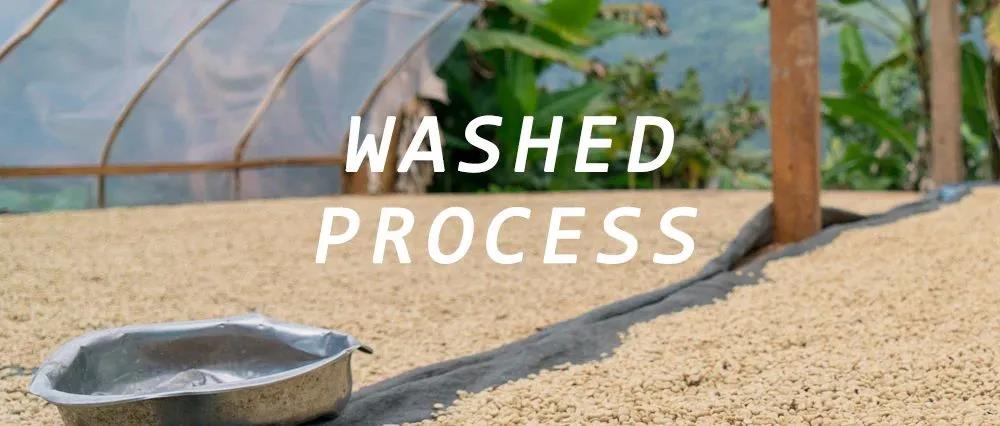
The steps of washing treatment:
Wash collection / flotation / rinse: coffee berries are sent to be processed immediately after picking, usually within 6 to 12 hours of picking. Coffee berries are first weighed, sorted, and then soaked in a pool in order to select fruits that float because of poor quality.
Peeling / beating: then the coffee berries are sent to the beater for peeling, this step is to remove the skin and pulp of the coffee berries.
Fermentation / degumming: coffee fruits without pulp and peel are sent to a fermentation tank or barrel for 18 to 36 hours, depending on the temperature at which they are fermented. During fermentation, yeast produces enzymes, and lactic acid bacteria decompose the sugar in coffee pectin. Lipids, proteins and acids in sugars are degraded and converted into alkyd (alcohol acidic acids). The smell, color and pH of coffee will change, and so will the pectin composition of coffee.
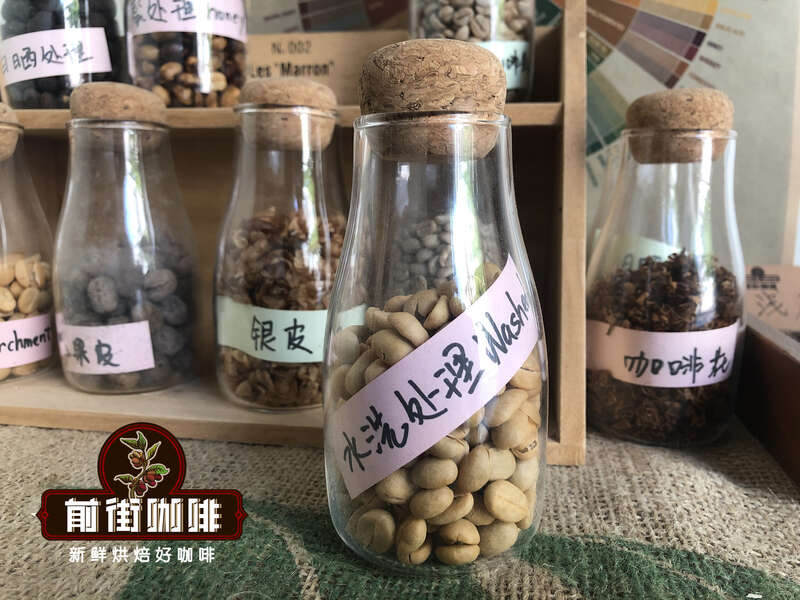
Wash: the coffee berries after fermentation degumming will be washed by adding an appropriate amount of water in the pool. During the cleaning process, the pectin decomposition products on the surface of coffee beans will be removed by stirring, leaving coffee sheep skin, silver skin and raw beans after cleaning.
Drying: washed coffee beans are sorted to remove defective coffee beans. Then it will be sent to the drying place (tarpaulin, cement floor, high bed, etc.) for drying treatment. Drying treatment will be based on the environment and climate and other factors to determine the length of time, usually ranging from 5 to 14 days. At this point, the moisture content of coffee beans will be reduced from 55% to 11%.
Storage: dried coffee beans are called shelled beans-raw coffee beans with sheep skin. The shell beans will be sent to the warehouse for preservation and will be shelled before export.
Just mentioned above, most of the African producing areas are mainly treated with water washing, but the water washing treatment in African producing areas is different from the traditional treatment. Kenya K72-hour washing treatment is used in Africa.
Kenya adopts the cycle repeated treatment method of washing after fermentation, which is made after the same day of harvest. The best quality coffee berries are selected for peeling and fermentation. The fermentation time is 24 hours, and clean river water is used after 24 hours. Then, it is fermented again with clean river water for 24 hours, then washed, and repeated 3 times to reach 72 hours, so it is called Kenyan 72-hour fermentation water washing treatment, referred to as [K72].
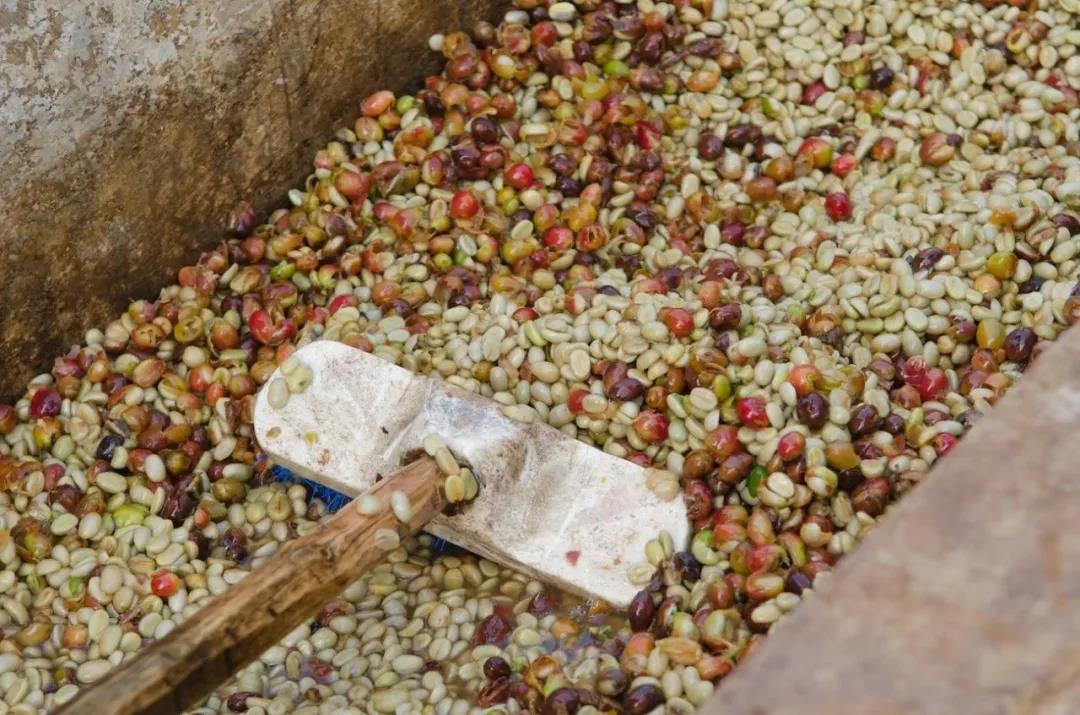
K72-hour washing treatment steps:
The first washing and fermentation of ①
After the coffee berry harvest, the beans will first be picked by the specific gravity of the water flow, the principle is to use the difference in the density and quality of the coffee fruit itself to do screening; coffee beans with high density (heavy) will sink into the water, while coffee beans with low density will float. The coffee fruits with high mature quality have high density, so they are screened out for further treatment. Qianjie believes that coffee beans treated with 72-hour fermentation water in Kenya are fermented for a long time at low temperatures and finally dried and dehydrated, giving the beans a brighter, cleaner and fuller flavor.
After the high-quality and ripe fruits are selected, the peel is removed, washed and soaked, and the pectin mucus attached to the outer layer of raw beans is fermented. Pectin has natural sugars and alcohols, which play an important role in the development of sweetness, acidity and overall flavor of coffee. The fermentation time is as long as 24 hours. after fermentation, 80-90% of the pectin can be removed, leaving only the flavor in the coffee beans.
The second washing and fermentation of ②
Then enter the second washing fermentation process, the coffee beans in the previous stage are washed and soaked in water for 24-48 hours. This process increases proteins and amino acids, and the acidity of coffee beans creates complex and delicate layers of taste. Finally, remove all remaining pectin and move the coffee beans to a high shelf for sun drying.
The fermentation time is as long as 24 hours. after fermentation, 90% of the pectin can be removed, leaving only the flavor of the coffee beans. finally, all the remaining pectin is removed and the coffee beans are moved to a high shelf for sun drying. the drying time depends on the weather conditions, which usually takes about 10 days to complete.
Sun treatment
Sun treatment is one of the oldest and most traditional treatments. Coffee fruits are dried in the sun immediately after picking, which is more common in areas where there is plenty of sunshine or lack of water resources. For example, nearly 70% of coffee fruits in Ethiopia are exposed to the sun. Qianjie Coffee believes that the sun drying method is to let the coffee fruit dry naturally, and the coffee beans can ripen naturally inside the fruit without being disturbed by the external environment, so the coffee beans treated by the sun method will enlarge their own flavor, mellow and strong flavor. and give off a sweet taste.
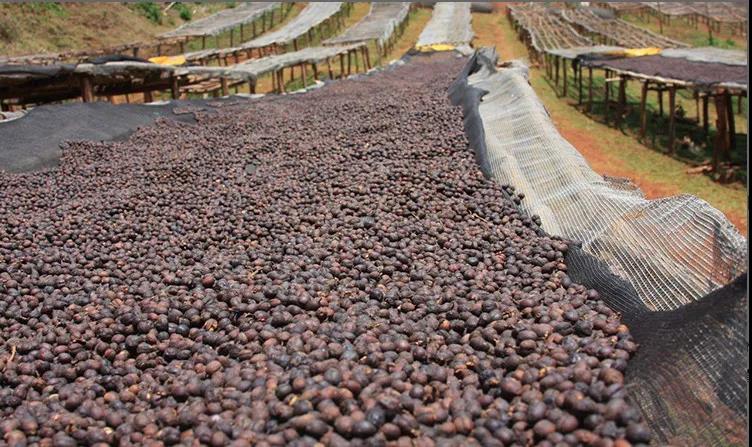
Sun treatment process:
1. Collect and filter
After picking the coffee fruit will be hand-selected first to select the defective coffee fruit, including overripe, immature, moth-eaten and, of course, foreign bodies in addition to the fruit.
2. Drying
After screening, the coffee fruit will be sent to a drying place for drying, and different regions may use different drying racks, some with tarpaulins, some with high beds, some with cement floors, etc., and the average drying time is 3 to 4 weeks. the drying process was not completed until the moisture content of the coffee was reduced to 11%.
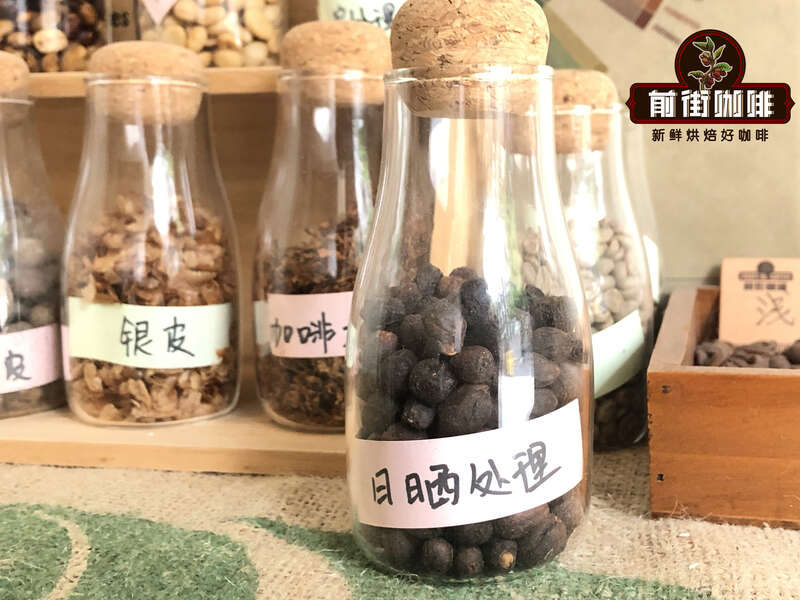
3. Peeling
After drying, the coffee fruit is sent to the processing plant for peeling and shelling, and even polished. Peel, pulp and other parts will be removed in this step.
4. Screening and sorting & warehousing
Peeled raw coffee beans will be screened again to remove coffee beans that do not look good. This reflects the quality of the coffee drying process, over-dried coffee beans will be more fragile, peeling process will be broken into debris; while under-dried coffee beans have too much water content, water is too active, easy to breed bacteria, mildew and so on.
A few days ago, there was a coffee on the street that was originally only treated with water. Since the 2020 production season, the sun treatment method has been launched in Panama Jadeite Manor Blue Standard Rose Summer, and then through roasting and cup testing in the front street, brewing coffee beans from both washing treatment and sun treatment, which are also from the blue standard of Jadeite Manor, to take a look at the differences in the performance of coffee raw beans and cooked beans.
Comparison of Blue Standard Rosa Rosa Bean
Blue standard rose summer raw beans, rose summer coffee beans slender, pointed at both ends, showing a long strip, very easy to identify. Sun-treated and water-washed raw coffee beans, you will obviously find that the sun-treated raw beans will appear yellow, while the water-washed raw beans will appear dark green, and will be attached to the incomplete silver skin.
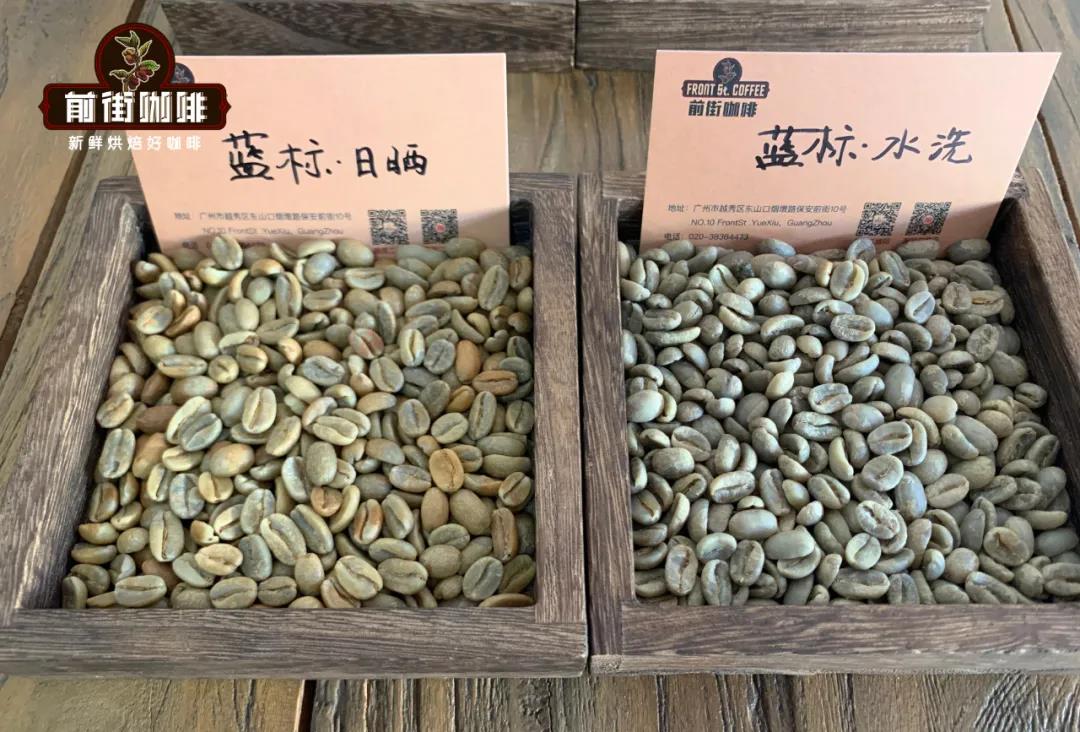
Qianjie Coffee Blue Standard Rose Summer Baking suggestion (the two treatments use the same method of medium and shallow baking, highlighting the flower and fruit aroma and the unique and pleasant acidity of Rosa. )
The furnace temperature is 180 ℃, the firepower is 130, and the throttle is set at 3; the temperature recovery point is 1: 39: 32 ". When the furnace temperature is 104 ℃, the throttle is opened to 4, and the firepower remains unchanged. When the furnace temperature is 151.6 ℃, the bean table turns yellow, the smell of grass disappears completely, and enters the dehydration stage. When 7 times 39 ℃, the bean surface appears ugly wrinkles and black markings, and the smell of toast obviously turns into coffee, which can be defined as a prelude to explosion.
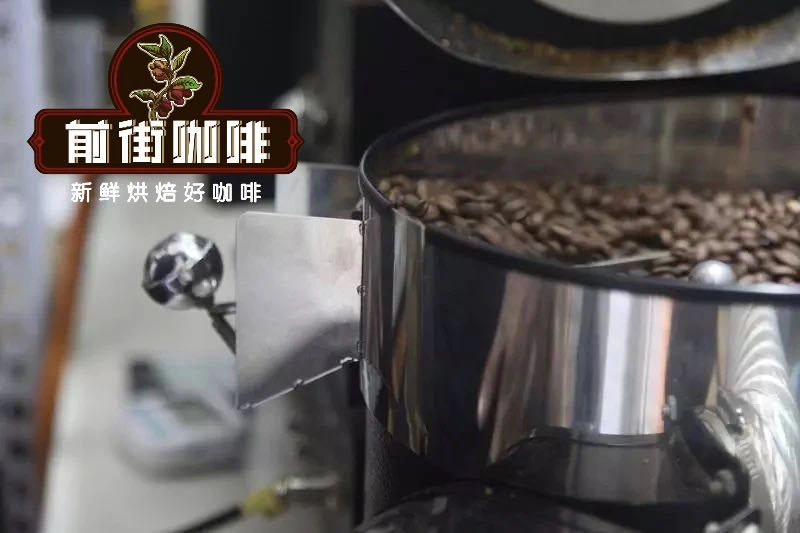
Comparison of Blue Standard Rosa Rosa ripe beans
The biggest difference between baked cooked beans, sun beans and water-washed beans is that the silver skin of sun-dried beans is very clean, while the silver skin of water-washed beans remains yellowish in the middle line. The reason is that the silver skin on the middle line of coffee beans is the most difficult to fall off in the baking process. Sun beans are relatively easy to fall off together with the silver skin on the middle line because the outer silver skin is connected with the whole piece of silver skin, while the silver skin of washed beans is attached to the bean body in fragments, and the silver skin cracked in the middle line cannot be easily peeled off.
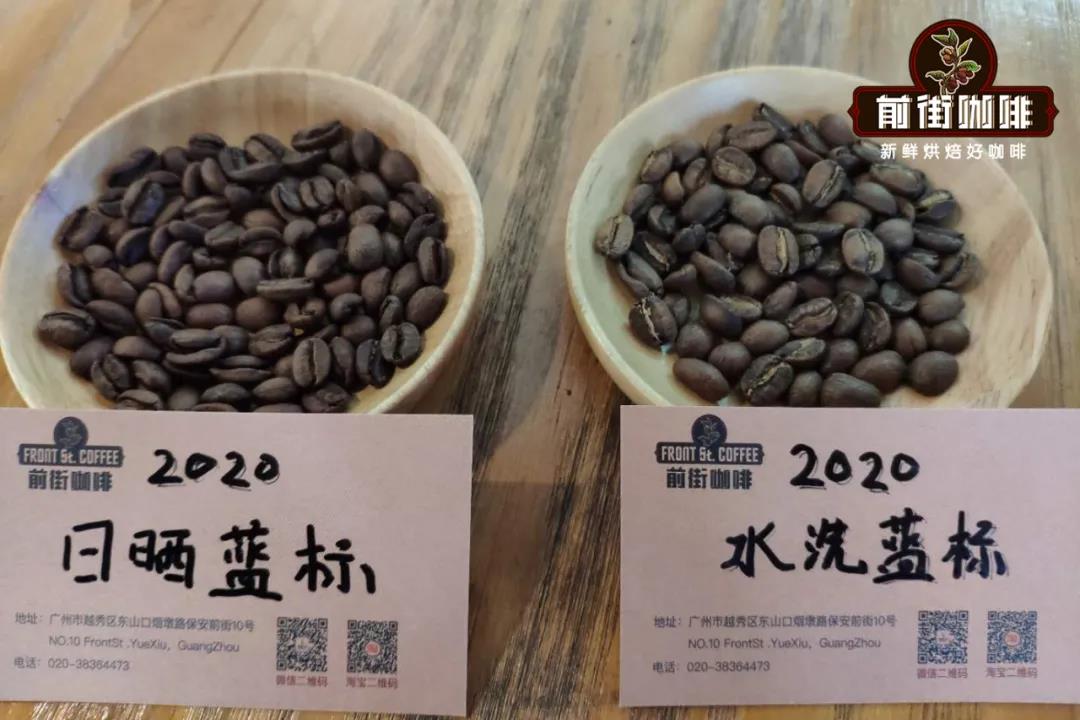
Coffee cup test report on Qianjie
Washed blue standard rose summer: Jasmine fragrance, citrus acid, clean and bright, honey.
Sun blue standard rose summer: fermented wine, sweet fruit, melon, tropical fruit.
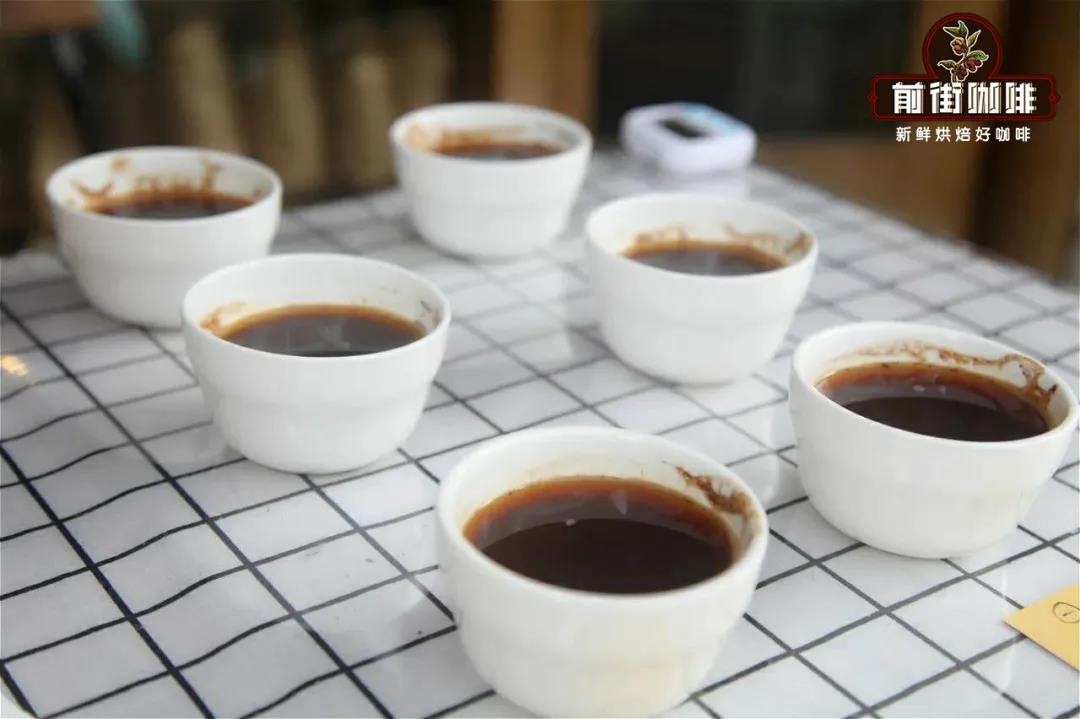
Generally speaking, when different treatments are used in the same bean, the flavor characteristics will have an obvious trend. In the sun treatment, the beans will be sweeter and fermented, with richer fruit flavor and hierarchical changes. On the other hand, the flavor of the beans treated with water will be plain and clean. In shallow baking, it also highlights the acidity and light aroma of beans.
Suggestion on brewing coffee in Qianjie
Filter cup: V60 # 01
Powder content: 15g
Ratio of powder to water: 1:15
Degree of grinding: BG6m (pass rate of No. 20 screen is 80%)
Water temperature: 90-91 degrees
* with regard to the degree of grinding, Qianjie is determined by screening this method. According to the grinding advice provided by the American Fine Coffee Association SCA for hand-brewed coffee, Qianjie combined with actual operation verification, using different degrees of grinding to brew, there is a significant gap in the finished products, and the degree of grinding of each type of coffee beans will be different, this is the significance of sifting. If you don't have a sieve at home, Qianjie Coffee suggests observing the speed of the water to judge that if the flow is too fast, it is coarse, and if the flow is too slow, it is fine.
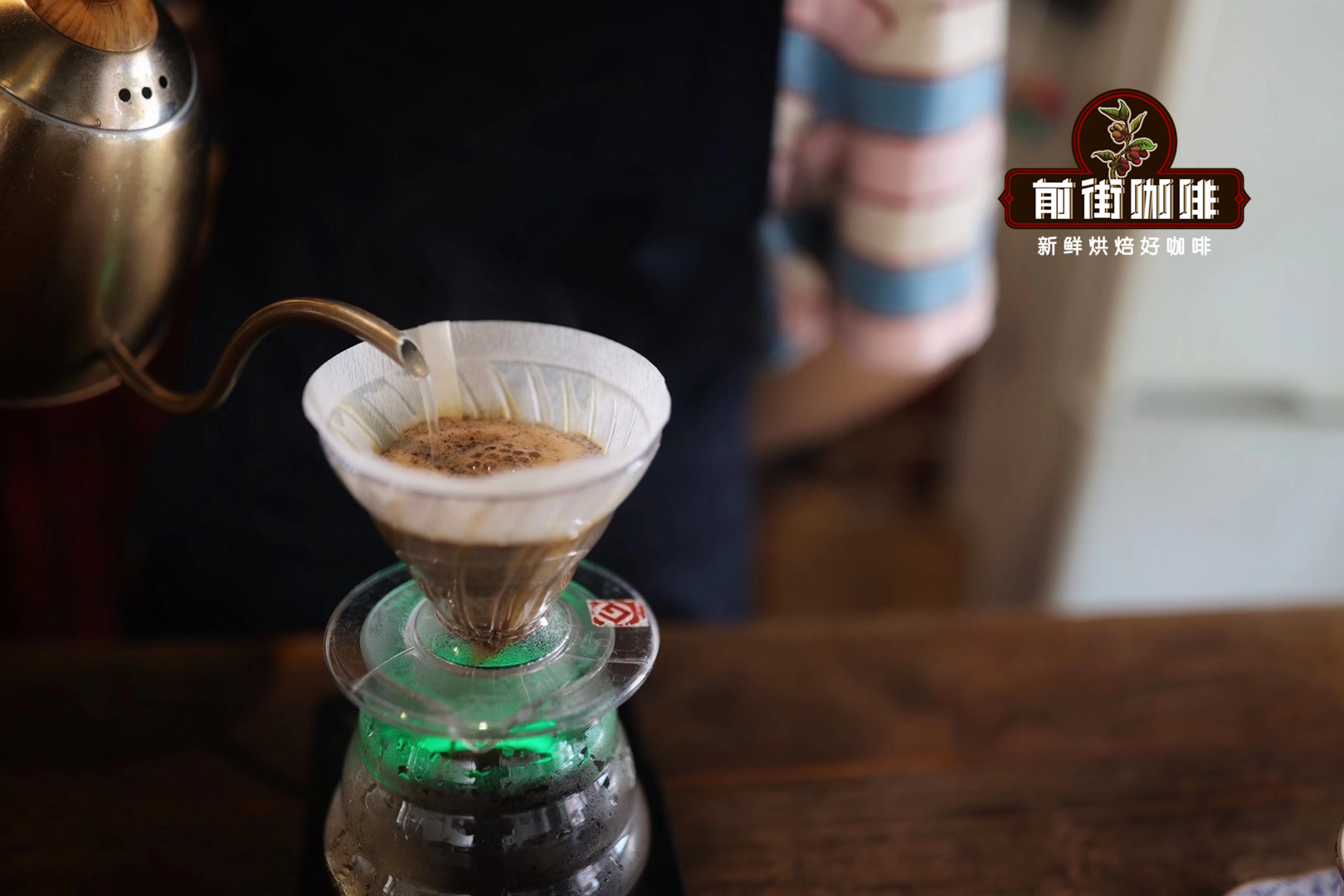
Qianjie coffee is extracted by stages, also known as three-stage brewing: steaming with 30 grams of water for 30 seconds, injecting water around a circle to 125 grams for stages, continuing to inject water to 225 grams when the water level is about to be exposed to the powder bed, removing the filter cup when the water level is about to be exposed to the powder bed, (steaming starting timing) the extraction time is 1 "39th 52"-1 "3955".
Washed blue rose summer cooking flavor: smell light jasmine flowers, taste the acidity of citrus, very bright, clean and comfortable taste, with honey flavor in the middle and back.
Sun blue standard roses summer cooking flavor: smell fermented aroma and fruit sweet, taste melons, tropical fruits sweet, like fruit juice taste, the overall sweetness is very high.
For more boutique coffee beans, please add private Qianjie coffee on Wechat. WeChat account: kaixinguoguo0925
Important Notice :
前街咖啡 FrontStreet Coffee has moved to new addredd:
FrontStreet Coffee Address: 315,Donghua East Road,GuangZhou
Tel:020 38364473
- Prev
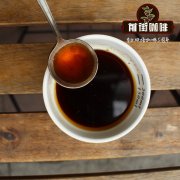
Coffee bean variety, origin, flavor analysis how to choose coffee beans? How do you eat it?
Professional coffee knowledge exchange more coffee bean information please follow the coffee workshop (Wechat official account cafe_style) to the coffee shop to drink coffee, feel the stylish decoration and atmosphere is great; hands-on brewing at home, can enjoy a quiet and comfortable time alone. And how to choose the coffee that suits the taste? The most important thing when buying coffee beans is flavor, variety, origin and roasting.
- Next
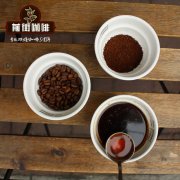
Effect of coffee bean treatment on how coffee beans are ground into powder can coffee beans be brewed directly
Professional coffee knowledge exchange more coffee bean information please follow the coffee workshop (Wechat official account cafe_style) to talk about the relationship between the treatment of raw coffee beans and how coffee beans are eaten. First of all, we need to talk about how coffee comes from coffee trees and ordinary trees blossom and bear fruit and grow into coffee fruits. The seeds inside are called coffee beans to remove the peel, pulp and pectin of coffee fruits.
Related
- Guji coffee producing area of Guji, Ethiopia: Humbela, Shakiso, Wulaga
- What is the most expensive variety of Qiloso in BOP multi-variety group?
- How to store the coffee beans bought home?
- Why are Yemeni coffee beans so rare now?
- Ethiopian Sidamo all Red Fruit Sun Sun Santa Vini Coffee beans
- SOE is mostly sour? What does it mean? Is it a single bean? what's the difference between it and Italian blending?
- Is Italian coffee beans suitable for making hand-brewed coffee?
- How to choose coffee beans when making cold coffee? What kind of coffee beans are suitable for making cold coffee?
- Just entered the pit to make coffee, what kind of coffee beans should be chosen?
- Can only Japan buy real Blue Mountain Coffee? What are authentic Jamaican Blue Mountain coffee beans?

